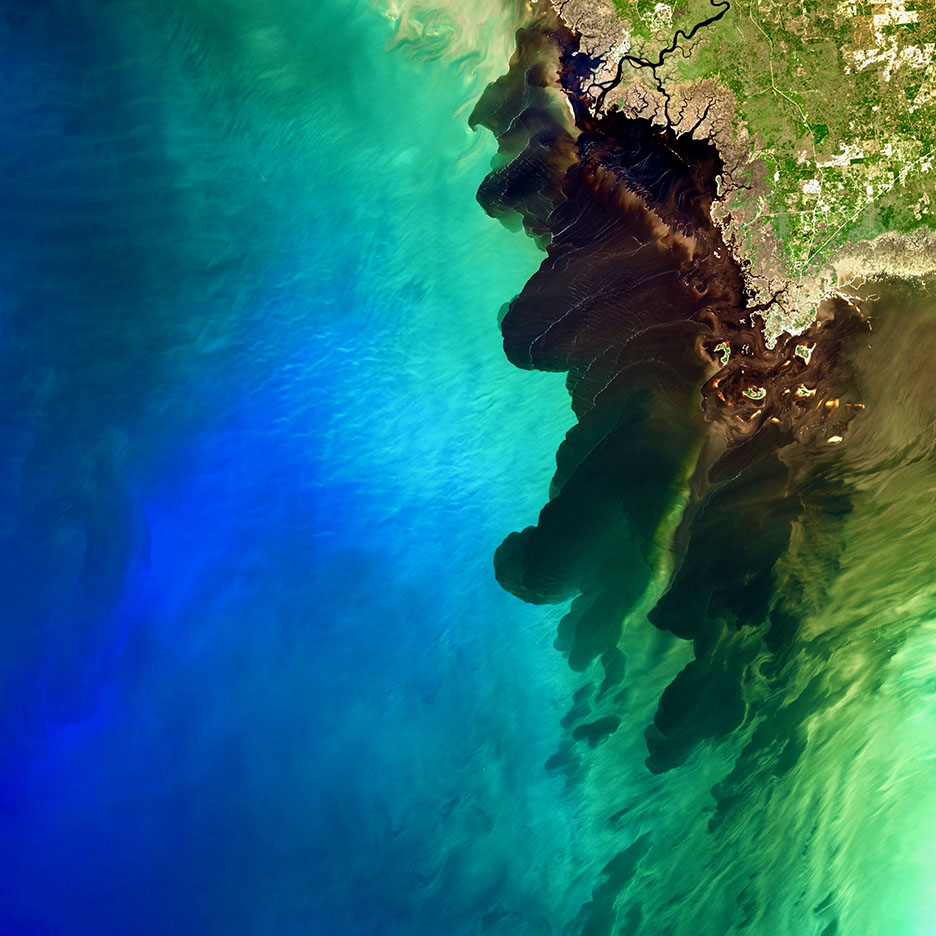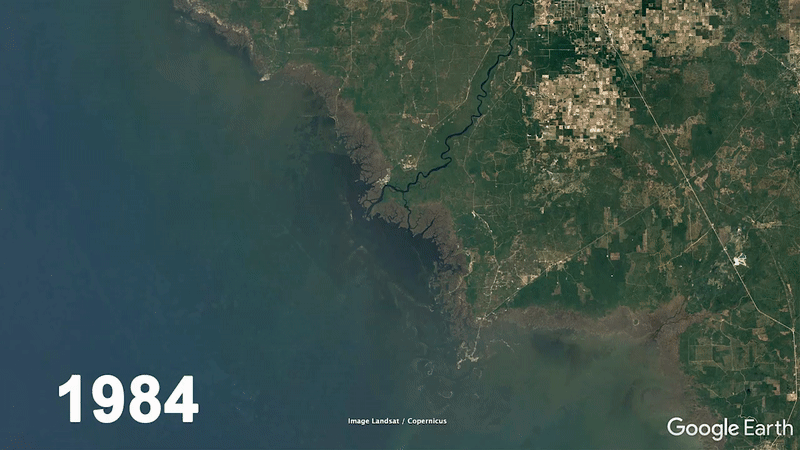Tides of Change
Scroll to Explore The Lower Suwannee
Climate change and human impacts collide when freshwater meets saltwater…
Coastal Communities
The Suwannee spills into the Gulf of Mexico through the Lower Suwannee National Wildlife Refuge. This is where the fresh blackwater of the river meets the estuarine and saltwater of the sea.

The mixture of salt and freshwater creates estuaries, which are some of the most biologically diverse and productive ecosystems in the world.
Estuaries provide habitat for fish, birds and other animals, but also provide benefits to humans in aquaculture like fisheries and shellfish harvesting.
Climate and the Future
The lower Suwannee is characterized by changing conditions. On one side, it is influenced by the human impacts on the river and groundwater supply. On the other side, global climate change is altering the ecosystem along the coast.
The amount of land in Florida that is undeveloped is shrinking, and the number of humans is increasing. Without freshwater, humans can’t live and businesses can’t operate. Too often, water is thought of as an ample resource that will seemingly never run dry, and while it may be true that there is a lot of water out there, humans are putting a considerable strain on the quality and quantity of supply that is available.
The water cycle doesn’t work as simply as it is demonstrated in grade school. It takes time for water to pass through its natural cycle, it is not an instant return system. Water pumped from the aquifer isn’t easily returned and harmful pollutants aren’t easily removed.

Rising sea levels are predicted to continue to alter the health and ecological composition of estuaries in the lower Suwannee, combined with the uncertainty of future levels of river discharge.
Open the water level menu in the bottom right corner and Drag to explore possible sea level rise Scenarios
A changing climate is projected to contribute to an increase in the frequency of major droughts and temperatures. Data collected over the past 100 years shows that four of the most severe droughts in the basin have occurred in the 21st century. Increased temperatures means that surface water is more likely to be evaporated before it is able to reach the aquifer. Florida already evaporates more water than it receives through yearly rainfall.
Scroll Through and Drag along the Timeline to Explore historical Drought conditions.
Continue to the credits or return to the homepage.